Henry 3 England. Henry III (1207–1272), English king from the Plantagenet dynasty. Exile and return
Henry III (1207-1272), English king from the Plantagenet dynasty
Henry III (Henry III) (1207-1272), English king from the Plantagenet dynastyHENRY III (Henry III) (1207-1272), English king from the Plantagenet dynasty, son of King John the Landless and Isabella of Angoulême, was born in Winchester on October 1, 1207. After John's death in October 1216, William Marshal, Earl of Pembroke, to whom John entrusted his son, knighted the young king. Henry's coronation took place on October 28 in the abbey church in Gloucester, in the presence of the papal legate Cardinal Guala. The fact is that just then a significant part of southwestern England (including London), as well as its other areas, was taken over by the French prince Louis (the son of King Philip II Augustus, later King Louis VIII himself), who laid claim to the English throne, referring to his marriage to Blanca of Castile, granddaughter of Henry II. Many English barons went over to Louis's side.
During the 24 years during which he had effective control of the government, he showed such indifference to tradition that the barons finally forced him to agree to a series of major reforms - the Regulations of Oxford. King John's eldest son and heir Henry was nine years old when his father died. The two ambitious Frenchmen then dominated Henry's regime until the barons led to their expulsion. This event marked the beginning of Henry's personal reign.
He succeeded his unpopular father at the age of nine, in a kingdom in a state of anarchy. Henry was described as "quite a little knight" when he was crowned at Gloucester Abbey Church with a ring belonging to his mother, as his father had previously lost the royal treasure at the Wash.
A regency council was established, which, along with Pembroke, who was awarded the title of rector regni, included the papal legate and Pierre de Roche, bishop of Winchester and tutor of the king. Council members pursued a policy of reconciliation, which helped put an end to civil war, and on November 11, 1216 in Bristol they issued a revised version of the Magna Carta, signed by King John in 1215. The Charter, which was a very useful document defining the specific privileges and obligations of the barons and king, gradually turned from a reason for contention between the crown and the barons into a means their unification. Now it was seen as the basis of a universal obligation to maintain the status quo in relation to lands, fiefs and income received from them, but all this was exclusively in accordance with the legislation of the country. Henry's official coronation took place at Westminster in 1220. By this time the papal legate had departed and Pembroke had died; their places were taken by Justiciar Hubert de Burgh (the Justiciar was the highest administrative and legal official of the kingdom) and Stephen Langton, Archbishop of Canterbury. However, in 1223 Henry limited their powers. The final version of the Charter was published in 1225.
William's highly respected Marshal, the Earl of Pembroke, was appointed regent along with Hubert de Burgh. At the time of King John's death, London and most of the canal's canals were carried out by the French. In a popular movement, the marshal announced his intention to administer the terms of the Magna Carta, the French occupiers were expelled and peace was restored to England.
Henry's character and appearance
He was of average height, measuring about 5-6 inches, and, like his father, tended to be chubby. 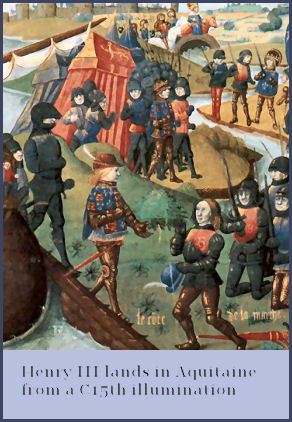
Henry Henry, Blanche, Queen of France, recognized this threat and supported Peter of Brittany to promise Yolanda a marriage with one of her own sons. Henry then promised himself to Joan of Ponthieu, but since this also posed a threat to Normandy, the French again intervened and prevented the marriage. Eleanor was the second daughter of Raymond Berenger, Count of Provence and Beatrice of Savoy. Beatrice herself was the daughter of Tomasso, Count of Savoy and Margaret of Geneva.
Two years later, Henry declared himself of age, and when de Burgh fell into disgrace in 1232, the king appropriated the prerogatives of the first minister, gathering around him the rest of his ministers and friends. He repeatedly tried to return lands in France that had previously belonged to the English kings, and in 1242 his army suffered a decisive defeat in Gascony. Nevertheless, for the next 17 years the war with France, albeit intermittently, continued. Henry allowed the papacy to impose heavy taxes on the English and agreed to have Italian clerics occupy church positions. In 1255, Henry accepted the offer of Pope Innocent IV to give his second son, Edmund the Crusader, the crown of the Kingdom of Sicily, on the condition that Henry would provide money for a campaign to reconquer Sicily. This would require enormous expenses, and the barons forced the king, despite the anger of the pope, to abandon these plans.
Elinor's older sister, Margaret, was married to the King of France. Unlike her husband, Eleanor was a strong, free character. Legend has it that his attention was attracted by her poem addressed to his brother Richard Earle of Cornwall. At this time, the nobles were dissatisfied with Henry's behavior. Henry foolishly showered honors on his queen's family, which increased their grievances. Eleanor's maternal uncle, Peter of Savoy, received the honor of Richmond and his brother Boniface was made Archbishop of Canterbury.
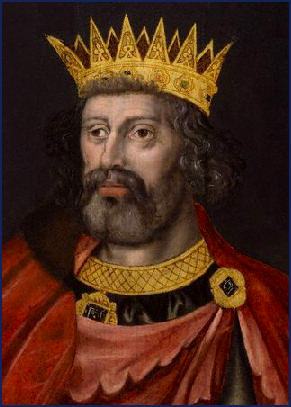
The situation was further inflamed by Henry's patronage of his French relatives, the Lusignans. They were his half-brothers through his mother's second brother with Hugh of Lusignan. They were also given earldoms and ecclesiastical posts in England. By the Rules of Oxford, a council of fifteen nobles to help govern the country was imposed on the king.
The discontent of the barons and people grew, and in the end the barons forced Henry to agree to the terms of the Oxford Provisions (June 1258). In accordance with them, Henry vowed to moderate spending, remove some of his foreign friends and relatives, and also renounce part of his claims in France. Power in the country was actually transferred to a council of 15 barons, to which the king was entirely accountable; in addition, the council had the right to appoint and remove senior officials. Three times a year, a parliament of 27 most powerful barons (15 council members and another 12 by choice) was supposed to meet to discuss the most important state affairs. However, the petty knighthood and townspeople were not satisfied with this, and on October 15, 1259, the council of barons adopted the Westminster Provisions, which protected the rights of vassals in relation to lords and established control over power by elected representatives of the knighthood. However, in 1261 Henry obtained from the pope an exemption from the oath to observe the Oxford provisions, and an arbitration court in the person of King Louis IX abolished them in 1264. But the group of barons led by the royal son-in-law Simon de Montfort was dissatisfied with this. In April 1264 they resumed fighting and on May 14 they defeated Henry at the Battle of Lewes, and the king himself was captured along with his eldest son Edward (the future Edward I). Montfort became the de facto ruler of England; in January 1265 he convened a parliament, where for the first time representatives of the “communities” were present - 2 knights from each county and 2 citizens from the largest cities. Edward soon managed to escape and gather an army that defeated the king's opponents at the Battle of Evesham on August 4, 1265, and Montfort was killed. After this, Henry transferred all real power in the kingdom to Edward, and he himself, decrepit and discouraged, retired from business.
Chief among them was Henry's son-in-law, French-born Simon de Montfort, Earl of Leicester, husband of his sister, Eleanor. The defiled Henry asserted himself and regained power from Queen Eleanor herself, who was very unpopular and especially hated by the people of London. The Queen was rescued by the Mayor of London, Thomas Fitz Thomas, and given refuge in the house of the Bishop of London. Her son Edward was never to forget this insult to his mother and thereafter reciprocate by hating the Londoners.
Exile and return
He elected a council of nine and ruled in the name of the king. Henry and his eldest son, Edward, along with his brother Richard, Earl of Cornwall, were placed under house arrest. Edward, a much more capable character than his father, escaped from his forced imprisonment and took up Henry's case.
The reign of Henry 3 in England fell on very difficult years. In fact, he took over the country in a catastrophic state in 1216, as a nine-year-old child. After a series of both military defeats and diplomatic failures made by his father John Plantagenet, monarchical power in England was significantly weakened. The Magna Carta, a document later considered progressive, greatly undermined the centralized power of the monarch. Nevertheless, Henry 3, King of England, ruled the country for 56 years - until his death in 1272.
last years of life
His body was cut into pieces and his head was headed to Wigmore Castle. Such of his remains as could be found were buried under the altar of Yvesam Abbey. Edward, although he disliked Monfort, accepted some of his ideas. 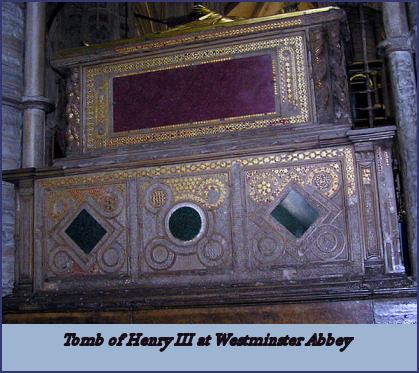
He restored Royal Palace at Westminster, his favorite home, restoring the palace and Westminster Abbey at a cost of nearly £55. Huge in Windsor major renovation The castle gave rise to a lavish palace complex, the style and details of which inspired many subsequent designs in England and Wales.
Mother of Henry 3, who was 22 years old younger than husband, lived until 1246 and played a significant role in the fate of her crowned firstborn.
Beginning of reign
The government of the country, due to the infancy of Henry 3, was carried out by a regency council headed by William Marshall, Earl of Pembroke, famous in England.
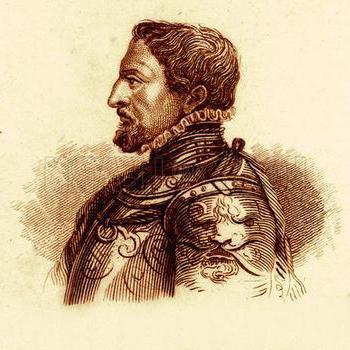
Henry revered and worshiped the Saxon king. He had a mania for building, and his life's work was the restoration of Westminster Abbey, first built by King Edward. His tomb, made with Cosmati markers, lies on the splendor of Edward the Confessor. His body was temporarily laid to rest in the tomb of Edward the Confessor while his own sarcophagus was built.
Widowhood of Eleanor of Provence
Eleanor of Provence remained in England after her husband's death, raising her grandchildren, Edward's children, Henry and Eleanor, and John, her daughter Beatrice's son. When her grandson Henry died in her care, she mourned his death and largely founded Guildford Priory in her memory. Her widowhood lasted nineteen years.
Young Henry 3 could expect the greatest danger from the east of his kingdom, which was controlled by barons who were dissatisfied with the rights that the Magna Carta guaranteed them.
In 1217, a battle took place in which the Earl of Pembroke defeated the army fielded by the rebel barons. The Earl's regency ended with his death in 1234.
John Dreux, Earl of Richmond. Richard. Regent William Marshal, 1st Earl of Pembroke. Hubert de Burgh, 1st Earl of Kent. Beatrice, Countess of Richmond. Edmund, 1st Earl of Leicester and Lancaster. Mother: Isabella, Countess of Angoulême. Burial: Westminster Abbey, London. Medieval, Royal, Noble Family Lists, Church of Jesus Christ of Latter-day Saints.
Born in Winchester, eldest son of King John and Isabella of Angoulême. The order was restored during the regency, based on the passage of Magna Carta, which curtailed the king's power over his nobles. He was eventually forced to sign Normandy, Maine, Poitou, Turin and Anjou. Henry was also marked by civil unrest as the English barons demanded more say on how to run the kingdom. Henry attempted to maneuver his nobles by obtaining papal absolutions from their oaths.
The next head of the council was Baron Hubert de Burgh. It is difficult to overestimate the contribution of this man to the preservation of the unity of England.
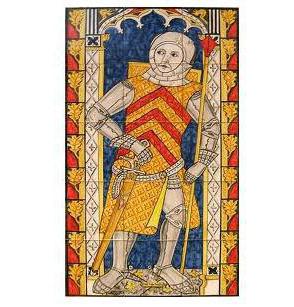
At that time, some of the nobility and almost all of Scotland recognized Louis of France as the king of England. The defense of Dover Castle, led by Hubert de Burgh, effectively stopped Louis's invasion of the island.
The barons, under the leadership of the king's brother-in-law, Simon de Montfort, forced Henry to accept a program of reform. The rest of Henry's reign was occupied by the decision civil problems created by the uprising. Two ambitious Frenchmen, Pieter de Roches and Pieter de Rivaux, then dominated Henry's regime until the barons led to their expulsion. Although Henry was charitable and cultured, he lacked the ability to govern effectively. In diplomatic and military affairs he proved to be arrogant but cowardly, ambitious but impractical.
The marriage arranged by Henry between his sister, Eleanor, and his brilliant young French favourite, Simon de Montfort, Earl of Leicester, increased foreign influence and further aroused the hostility of the nobility. The barons then began to demand a vote in choosing Henry, but the king repeatedly rejected their offer. Henry approached the barons for funds, but they agreed to cooperate only if he accepted far-reaching reforms. These measures, the Oxford Regulations, provided for the creation of a 15-hour council, chosen by the barons, to advise the king and supervise the entire administration.
Finally, in 1227, upon reaching adulthood, Henry 3, King of England, began to rule independently, in his own name.
Exile and return
It is known that during the reign of Henry 3, exactions from the nobility increased significantly. Disgruntled barons took up arms against their monarch. Under their pressure in 1258 in Oxford, the king was forced, in the presence of 24 representatives delegated by the barons, to sign the so-called Oxford Provisions, limiting his power. But already in 1261, Henry was released by the Holy Pope from obligations under this document (an analogy with the “conditions” signed under the influence of members of the Privy Council Anna Ioannovna, Empress of Russia, and then solemnly torn apart).
The barons, however, soon quarreled among themselves, and Henry took the opportunity to renounce the Regulations. Henry, weak and senile, then allowed Edward to take charge of the government. Like his father, he had difficulty gaining trust. his barons, and, like his father, became involved in a bitter conflict with them. Costain: The Magnificent Century. Minor, when he took the throne, he did not accept kingship. Government itself, until the Reforms were agreed upon and then annulled by Henry.
Simon de Montford led a revolt against the king, which failed after initial success, after which Hneri was betrayed most of his power. his son. Plantagenet primer on the last English king to die in battle. And why does he continue to inspire such interest?
Henry 3's refusal of the Provisions led in 1263 to an uprising led by the king's son-in-law, Count Simon de Montfort. And in 1264, Henry 3, King of England, was captured by the rebels.
 For about a year, the country was ruled by a council headed by the leader of the uprising. But the situation in England at that time was such that many were afraid of de Montfort’s strengthening of power, and the king’s escape was arranged.
For about a year, the country was ruled by a council headed by the leader of the uprising. But the situation in England at that time was such that many were afraid of de Montfort’s strengthening of power, and the king’s escape was arranged.
Thus began the legend of the "princes in the tower" and the long-standing popular belief that Richard killed his nephews to remove any competing claims to the throne. This was widely discussed for many years, with passionate arguments made both for and against Richard.
Richard's body was returned to Leicester, publicly displayed and then given to a group of Franciscan friars for burial. With the dissolution of the monasteries, which disappeared into the monastery, and with it clear evidence of Richard's grave. Stories and rumors about where Richard's mortals lay, or what happened to them, spread in the following centuries, but most of them were subsequently depicted as tales.
The fate of the Plantagenet dynasty was decided during the battle of Isham in 1265, where the king's supporters gained the upper hand, Simon de Montfort died (he was posthumously deprived of the nobility, respectively, leaving no titled heirs), and the king's power was restored.
Government
All the actions of Henry 3 were dictated by the situation that formed in the country during the reign of his father. For almost the entire period of his reign, Henry was completely absorbed in resolving issues of power and quarrels with the barons. He paid very little attention internal structure of your state. The reforms of Henry 3 mainly concerned the church. It is believed that he was a very pious man. Some contemporaries testified that he sincerely cried during prayer.
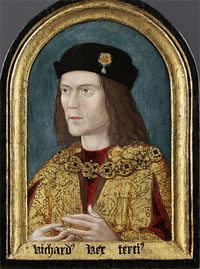
They noted many important changes in English law, including the presumption of innocence until proven guilty and reform of the jury system. He is the 12th of 13 children, seven of whom survive adult life. Eight-year-old Richard becomes the ward of his older brother Edward, who has recently...
However, Warwick releases Edward when it becomes clear that he cannot rule alone. Warwick leads a second rebellion against Edward, which forces the king and Richard to flee across a canal to Burgundy. Richard marries Anne Neville, daughter of the "Kingmaker", and settles in the north of England, effectively ruling the region on behalf of his brother.
The holy King Edward the Confessor was highly revered by King Henry III. Many temples were built in his honor throughout England.
The reign of Henry 3 is associated with the rise of the church. Servants of worship received more rights and privileges. The state treasury paid for the construction of temples. The cathedrals themselves began to be built using a different technology; they became more airy and openwork.
Richard may also have had two or three illegitimate children, but little is known about them. However, Richard was informed that his brother's marriage was invalid and the children were illegitimate. The two princes were never seen again. Only child Richard and Anne, Edward of Middleham dies, probably of tuberculosis, date unknown. The royal parents have holed up to mourn their loss at Nottingham Castle.
Richard's body was taken to Leicester and buried in Greyfriar Church. Edward's parents were known for their patronage of the arts. As a result, Edward received a disciplined education - reading and writing Latin and French with instruction in the arts, sciences and music.
Two new religious orders arose in England - the famous Franciscans and Dominicans. On the basis of the Dominican Order in Europe, the Inquisition would later arise, known for the famous witch hunt, as a result of which hundreds of thousands of human lives would end.
last years of life
Henry's reign after the restoration of his royal power was not overshadowed by any serious threats or troubles. The country was no longer torn apart by uprisings and strife. The king himself considered his main achievement to be the consecration of what was built during his reign, where the remains of his idol Edward the Confessor were transferred.
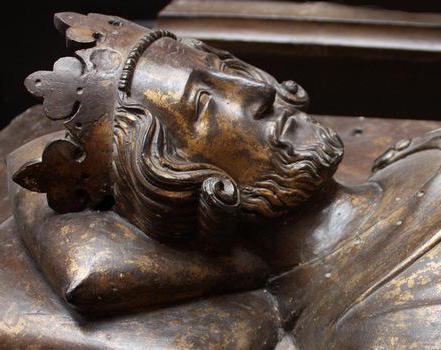
Moreover, in the tomb built for the saint, for some time there were the remains of Henry 3 himself, who died in 1272, since his resting place was not yet ready at that time.




